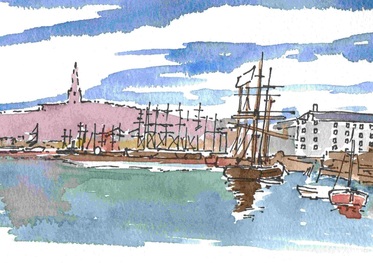The Merchant City: The Eighteenth CenturyDuring the Eighteenth Century the city was rebuilt following the destruction of the preceding century. It also expanded outside its walls as the port grew in size. Emigration to America formed a important part of this trade. A significant reason for this was the reaction of Presbyterians to the Penal Laws which imposed restrictions upon the rights of people who did not subscribe to the established Church of Ireland.
Buildings were constructed in a simple and elegant form of architecture with an emphasis upon proportions. Decoration was confined to elements such as doors and interior plasterwork. Within the city, houses formed streets of similar buildings. This reinforced a sense of unity and increased the prominence of public buildings. |
|


